High Capacity O2 masts: B3 4G, Six Sector (and more), O2 Microcells, Higher Order MIMO, B1 LTE (2100MHz 4G), B40 LTE
4G+ (800MHz (B20) 10MHz + 1800MHz (B3) 5MHz) CA for 15MHz total Bandwidth.
O2 '4G+' is available in quite a number of towns and cities in the UK now as it provides additional speed and capacity over the 800MHz base layer. Dual dual band Amphenol Antennas are a common panel to see on these masts which is understandable due to the configuration required to carry all the frequencies: 800MHz 4G, 900MHz 2G and 3G, 1800MHz 4G and 2100MHz 3G. I will start the page with three sector examples, before covering six sector types.
Mountsorrel, Leicester O2 4G+ Mast (3 Sector)

The '4G+' mast, showing the panels. There is an Amphenol dual dual band panel, which has two low bands and two high bands cabled. The other is a Kathrein with the low band cabled. This then leads to the shown schematic beng the most likely, in my opinion.

Field test mode and a speedtest. The 10MHz carrier on the 800MHz is capable of a maximum of around 75mbps, so it is clear this is a test on '4G+'. This is an even faster speed test Generally, O2's '4G+' is just displayed as 4G on handsets. The highest speed achievable on O2's '4G+' is around 110mbps.
O2 '4G+' Masts in Brighton (3 Sector)
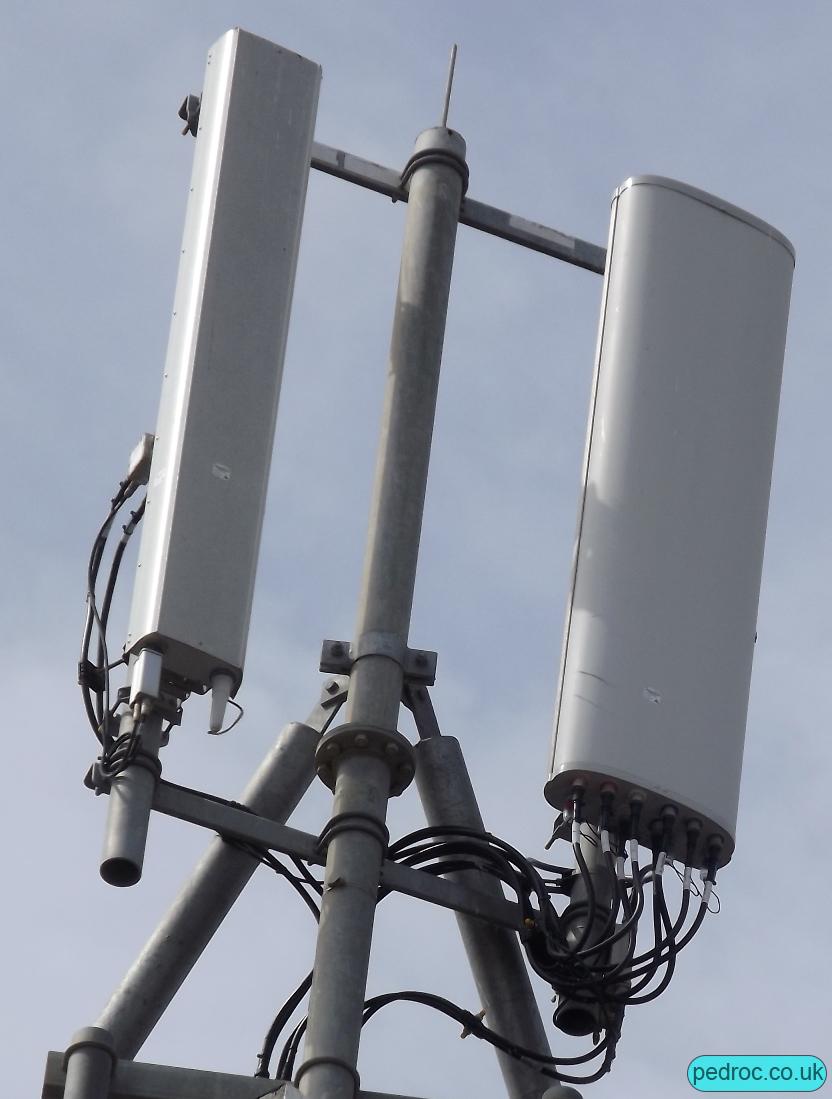
This O2 '4G+' mast is on Western Road, Brighton. It is the same setup as the mast shown above.
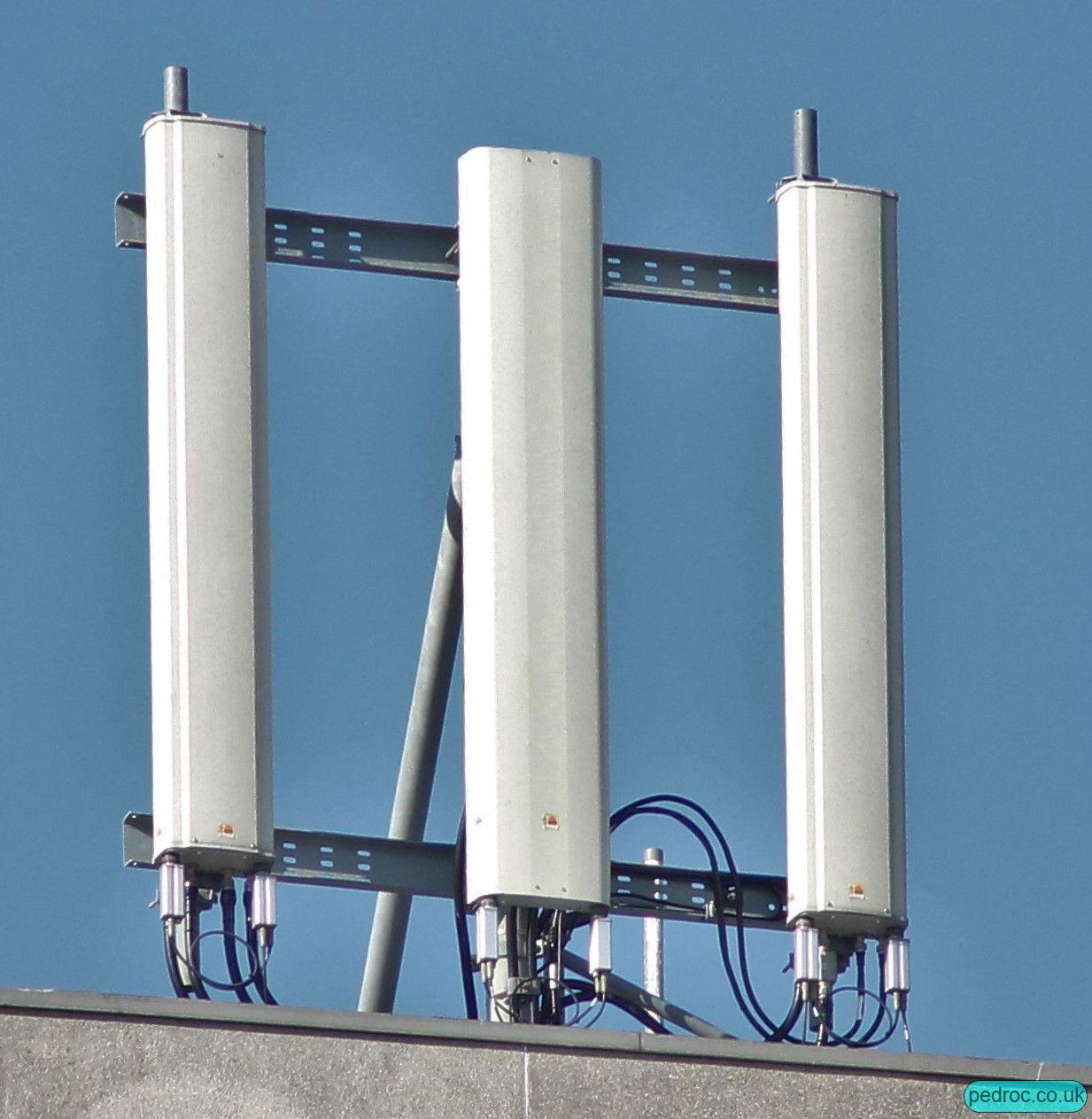
A slightly different panel setup for carrying the O2 '4G+'. This example is on Brighton College and can be recognised as carrying 1800MHz for the '4G+' by its large number of high band inputs.
Six Sector O2 '4G+' Masts (Maple House, Tottenham Court Road)
Six Sector (plus) masts are used for providing network capacity for ultra dense capacity requiring environments, such as busy central London shopping districts.
Instead of having three sectors carrying L08 and L18, there are six. This almost doubles the capacity.
A core serving site carrying Vodafone and O2 for University College London (UCL). It is six sector for two LTE carriers; 1800MHz and 800MHz, as well as 3G 900 and 3G 2100MHz. Vodafone was L08 only at the time of my visit.
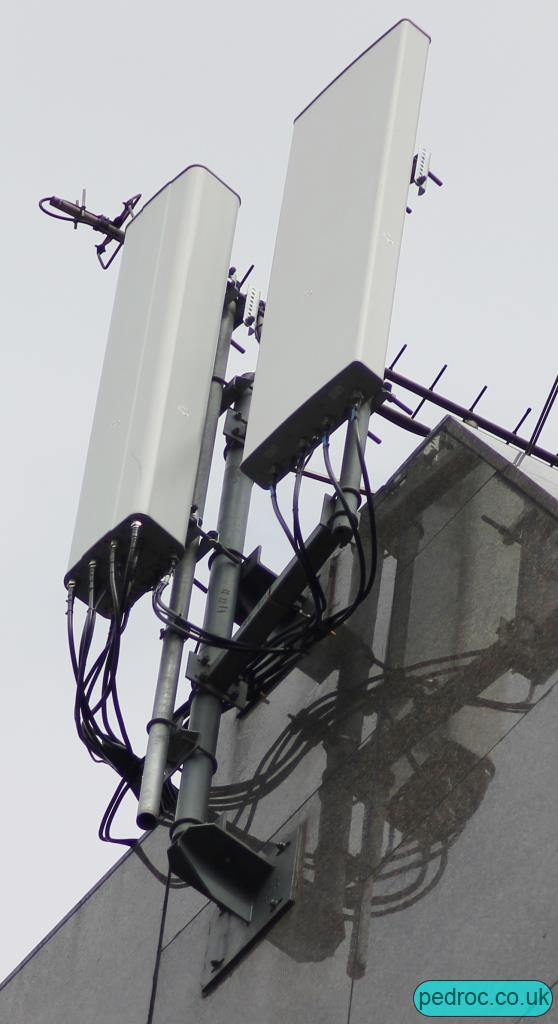
This Six Sector example is on Maple House, Tottenham court road. The right panel is dual beam for low band (Commscope Argus Twin Beam 2CPX208R), so will carry the 2G/3G 900MHz and 4G 800MHz. The left panel is a Commscope CVV2NPX308.208R which provides dual beam for the high bands so 4G 1800MHz and 3G 2100MHz with spare ports. With dual beam panels on all three sides, a six sector mast is formed.
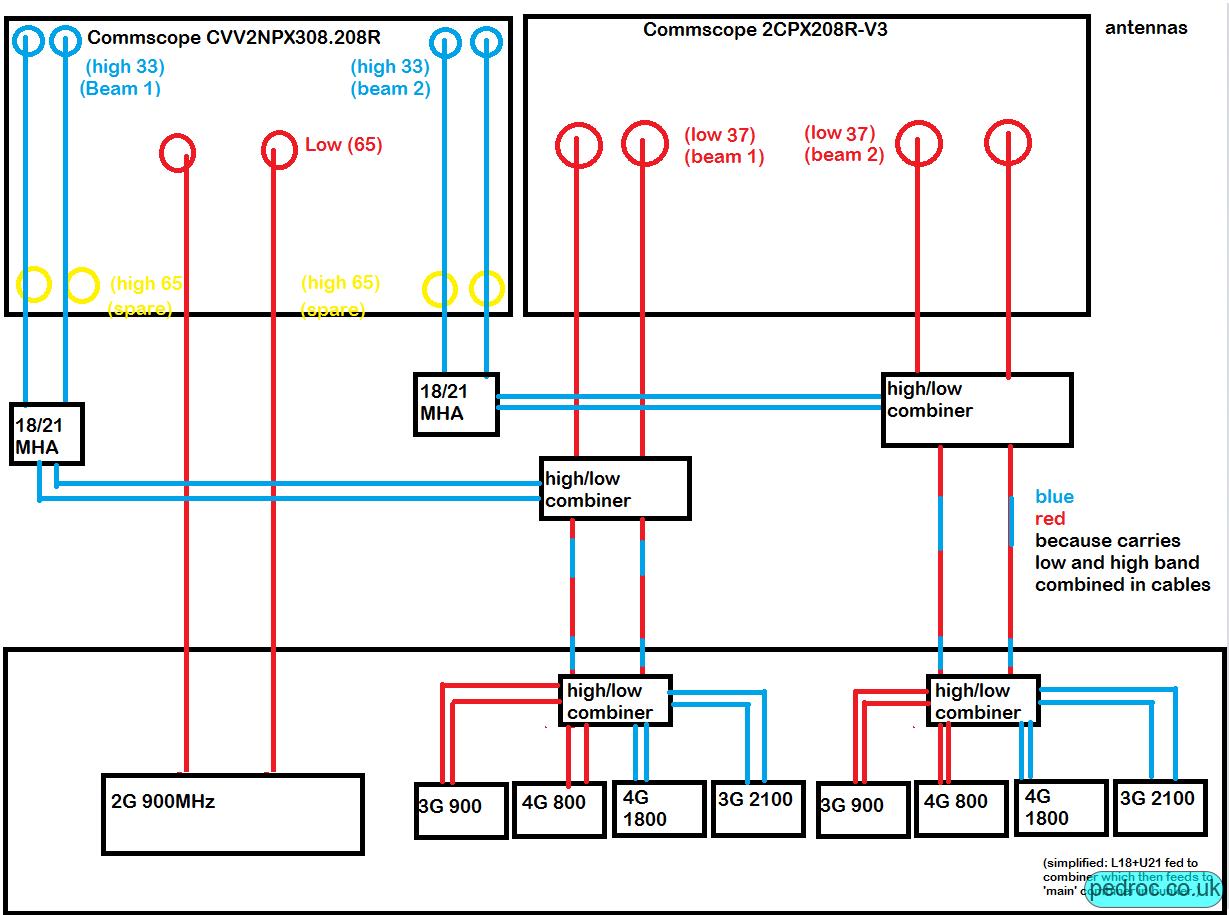
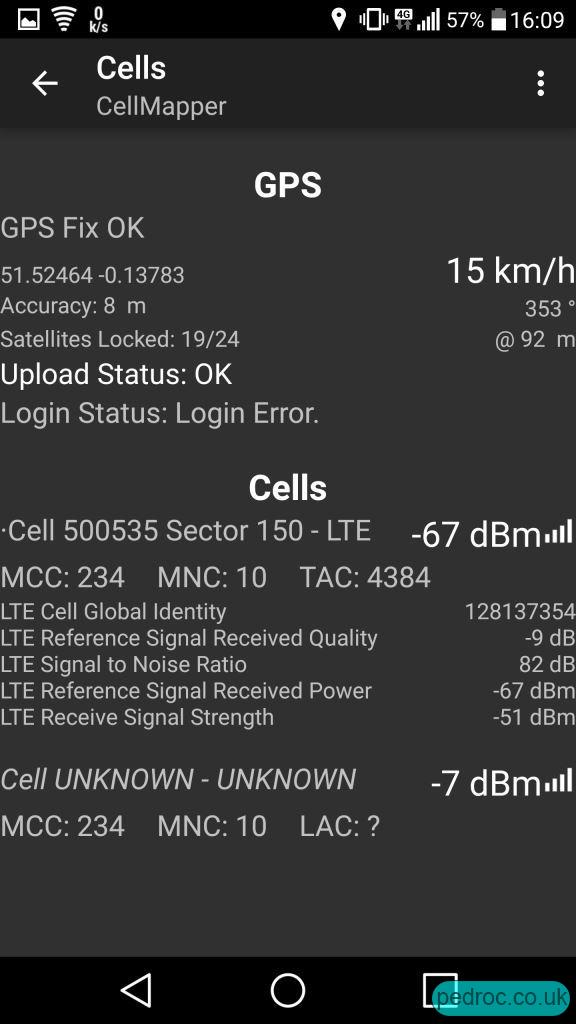
It is possible to tell that the mast is six sector for 800MHz because O2 cell IDs are 110, 120, 130 for Sectors 1, 2 and 3 and 140, 150, 160 for 4, 5 and 6.
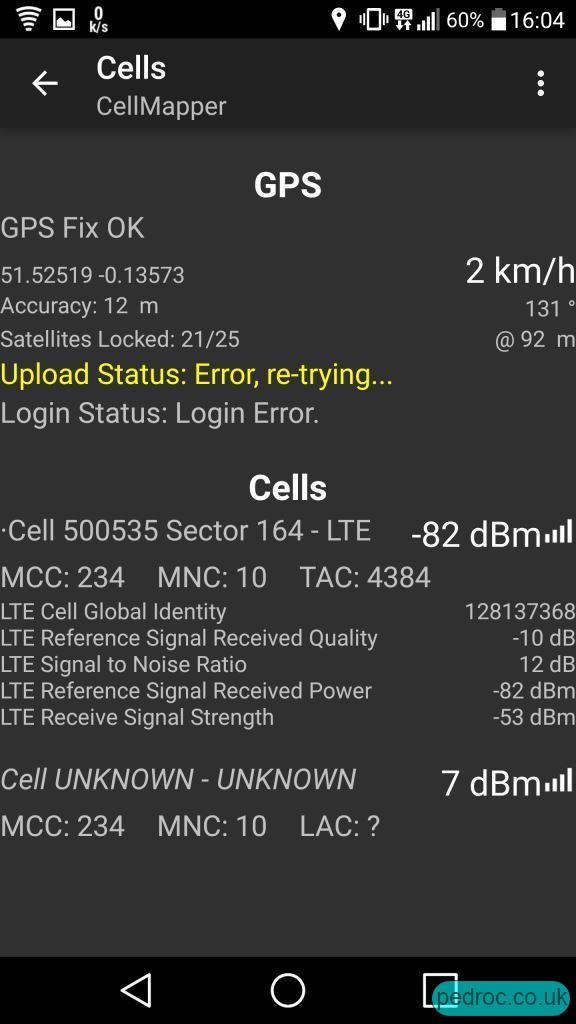
1800MHz cell IDs work the same way as 800MHz ones but with +4, so 114, 124, 134 for three sectors and 144, 154 and 164 for sectors 4, 5 and 6
Sheraton Park Tower, Kensington
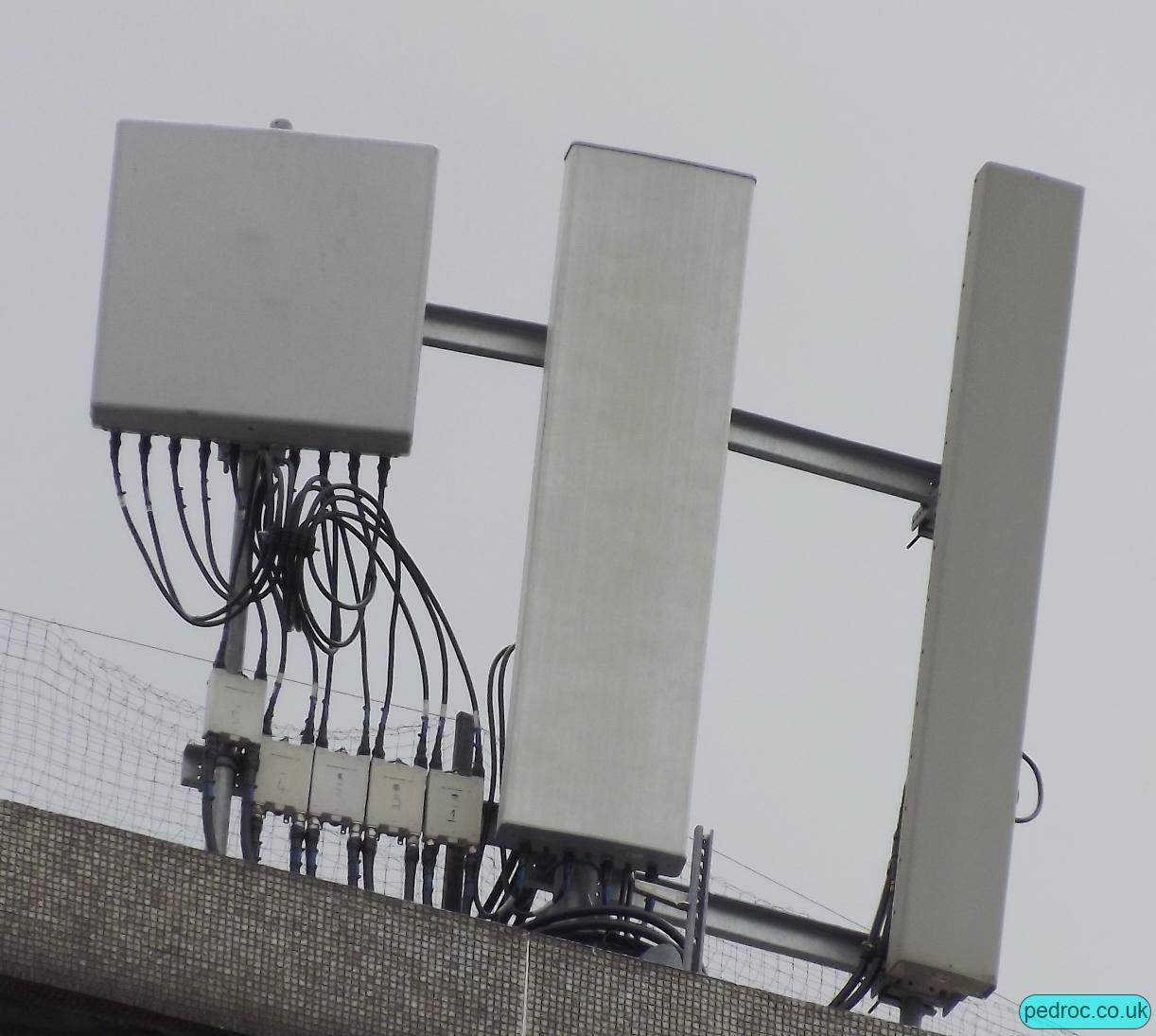
This mast is different on each sector. It has dual beam low band panels, Commscope Argus 2CPX208R, (middle panel) for 3G 900MHz and 4G 800MHz, as well as a single beam panel (left) for 2G 900MHz and 2G 1800MHz on each side. Then on the North East side (pictured here), there is a five beam panel, Commscope 5NPX1006F, for 3G 2100MHz. The other two sides of the mast have dual beam panels for 3G 2100MHz.
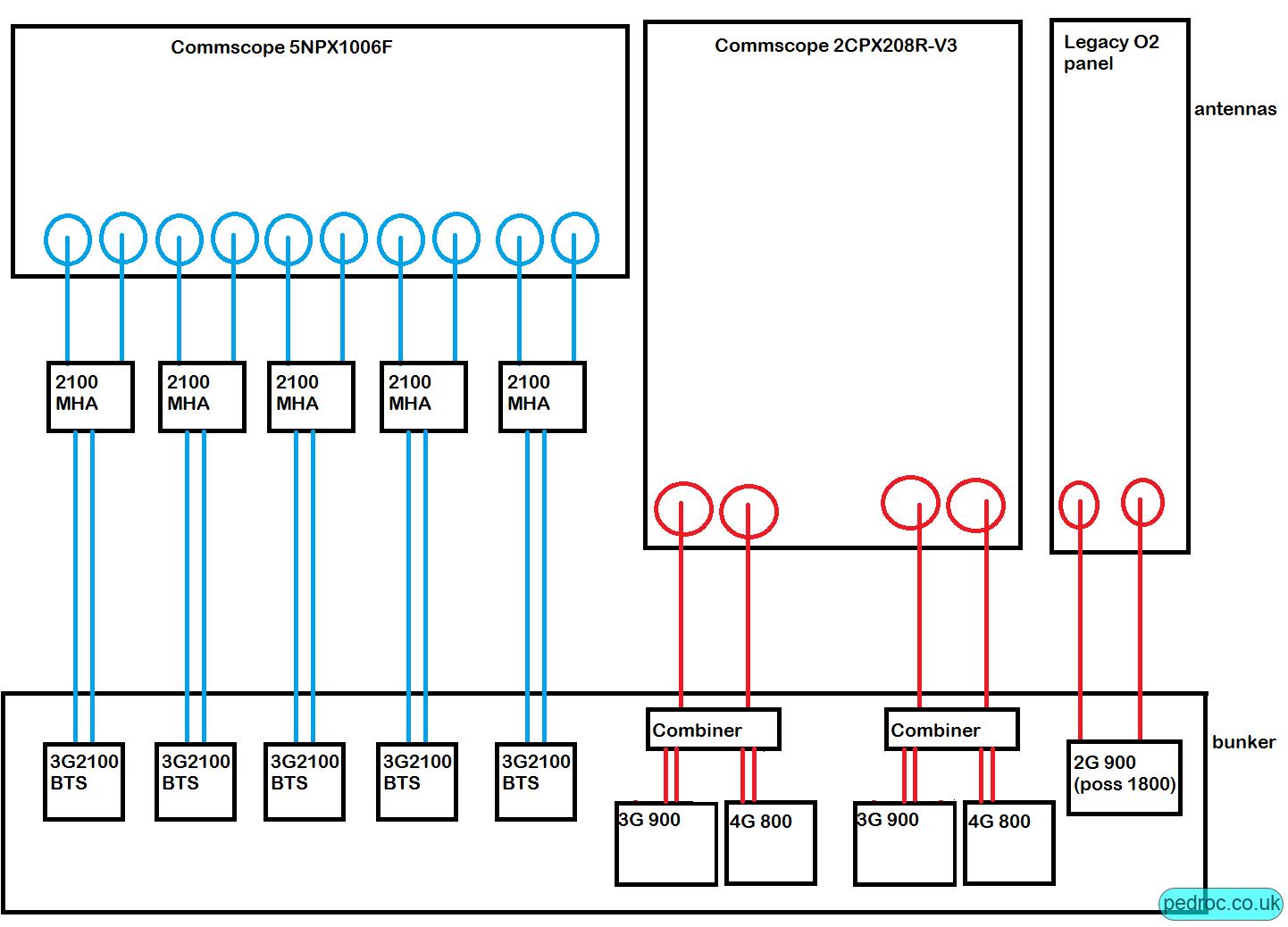
A schematic showing how the mast on the left is setup.
O2 Microcells
Mast located near Churchill Square Shopping Centre in Brighton. The mast appeared to be 3G 2100 and 4G 1800MHz though due to the number of neighbouring masts and limited time in the area, I cannot be sure.
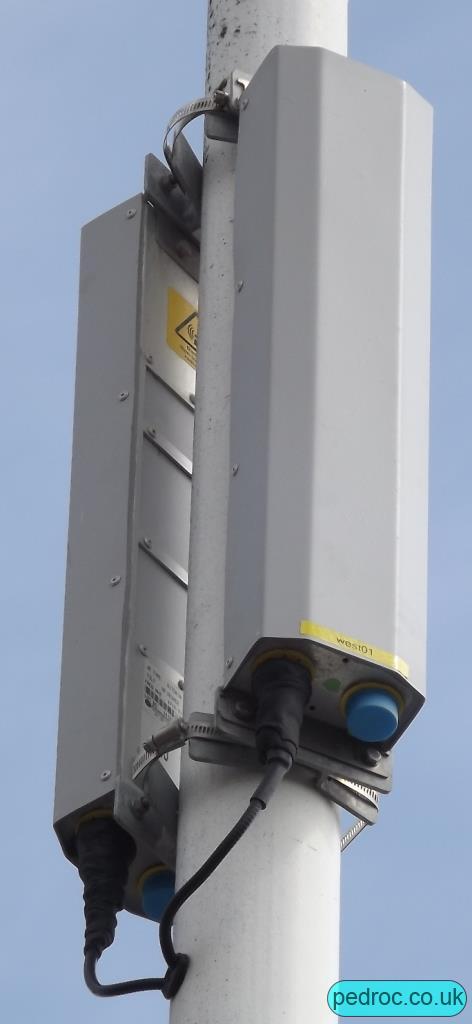
The panels are mounted on a lamppost and are very compact.
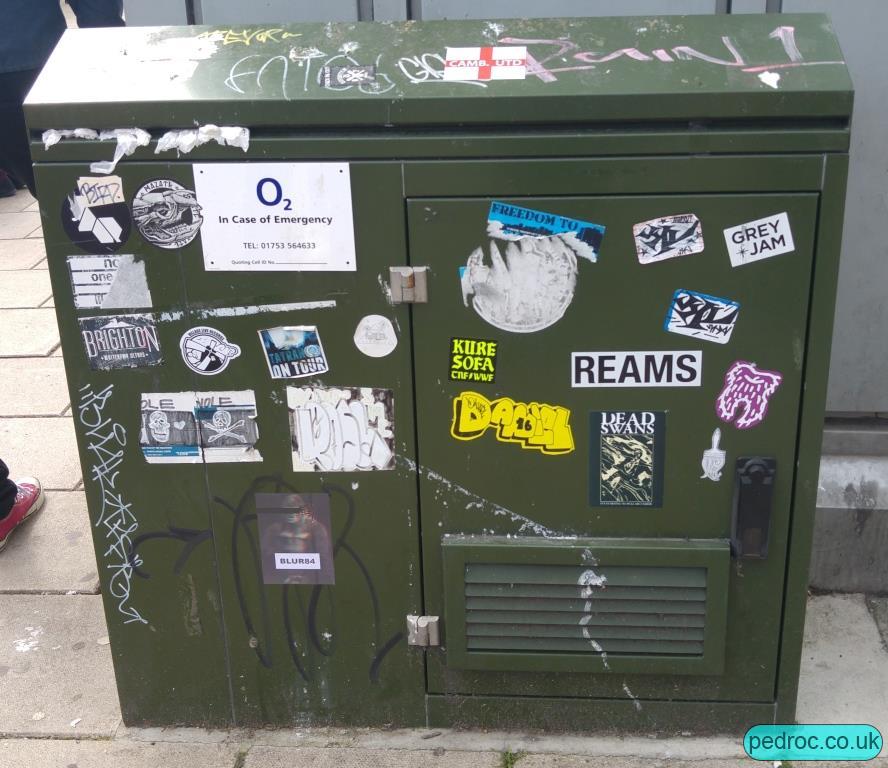
The cabinet. I believe manufactured by Alifabs.
Higher Order MIMO
4x4 MIMO on both L08 (B20) and L18 (B3). Higher order MIMO improves cell edge capacity and, on handsets that support higher order MIMO, allows for higher throughput.
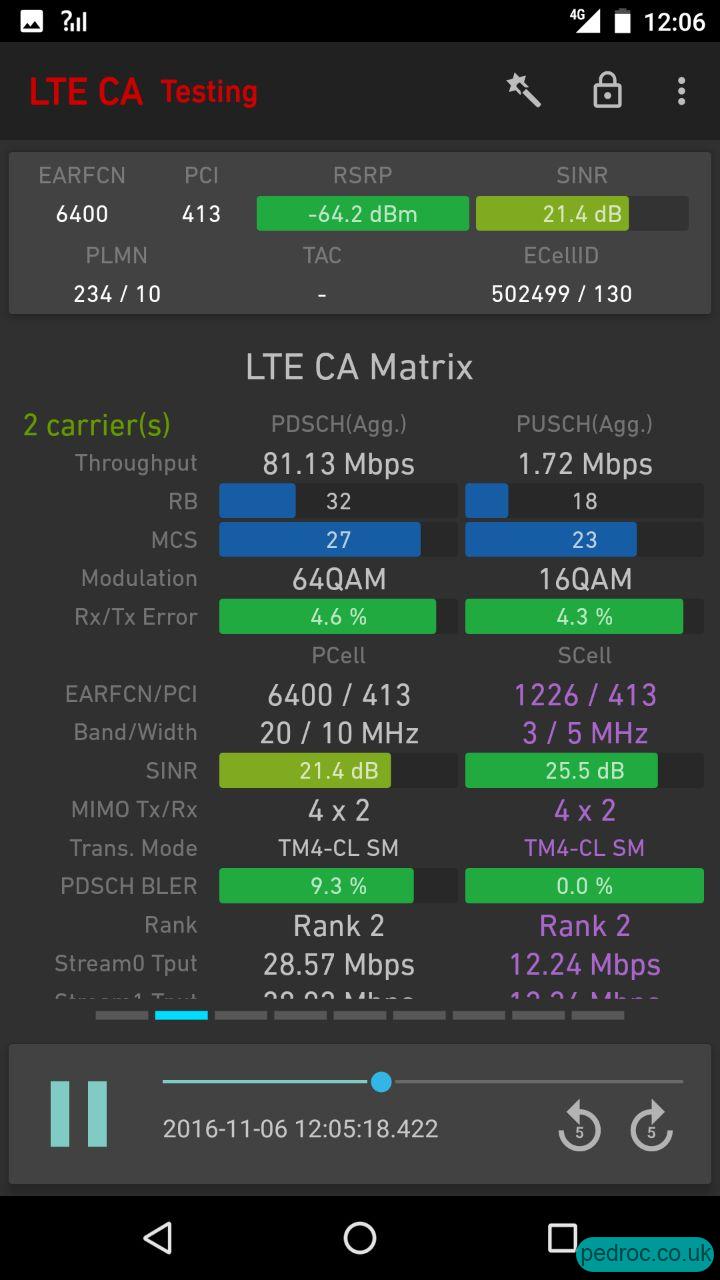
O2 10MHz 4G 2100MHz 4G:
O2 2300MHz Mast Deployment
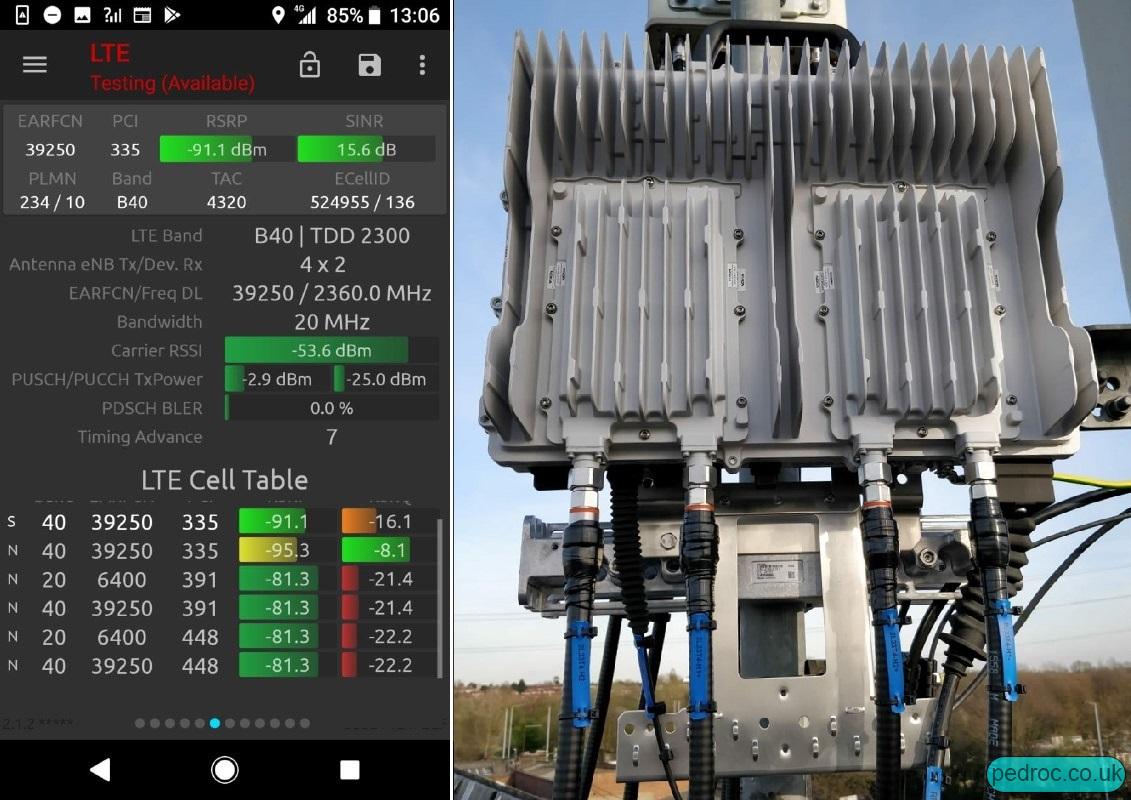
O2 2300MHz Deployment, please see its own page here: O2 UK L23 at 40MHz with 4T4R and 8T8R
O2 2300MHz TDD (B40) Trial 4G Mast with 8x8 MIMO for Beamforming